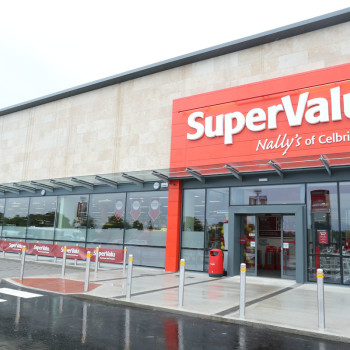How to win against tough competition

David Berry, director at Kantar Worldpanel, reflects on the lessons of 2015 and examines what’s in store for 2016
20 January 2016
If you could ever hope to sum up an entire year in Irish grocery in a single word, 2015’s would have to be ‘competition’. It was a year in which retailers were forced to battle fiercely for their share of spending. Newly confident consumers may now have more to spend, but the recession created a lasting impact on how people shop – we’re less loyal and more likely to shop around than ever before meaning grocers have to work harder to hold on to their customers.
2015 began with less than two percentage points separating the big three retailers and we’ve ended with an even tighter line up at the top – less than one percentage point now separates SuperValu, Tesco and Dunnes. But the most dramatic testament to the competition that defined 2015 is that we ended the year with a new market leader declared Ireland’s largest supermarket for two periods in a row. SuperValu stole the crown from Tesco, with its market share of 24.7% ahead of Tesco’s 24.1%. SuperValu’s rebranding of Superquinn stores to carry the SuperValu name in 2014 provided the retailer with a strong platform from which to launch its bid for the top spot. Meanwhile Dunnes has also performed well, remaining in sales growth throughout 2015.
So will 2016 be the year of the comeback for Tesco? The retailer spent last year investing in offering shoppers lower prices, and although that may have meant compromising its share of value sales in the short term, there are signs that this strategy may be beginning to deliver results. In the latest quarter of 2015, Tesco actually saw volume growth and if this continues then the retailer could reasonably expect to see a corresponding increase in value sales. Tesco will need to work hard to reclaim the top spot, but it’s by no means impossible.
Going for growth
Of course you cannot consider 2015 without giving the discounters their due. The rapid expansion of Aldi and Lidl continues, and although it may have slowed in recent months, shows little sign of abating. We can expect Aldi and Lidl to continue growing ahead of the overall marketplace throughout 2016, increasing their market share by a combined 2.5 percentage points by 2020.
So how will they achieve this in such a fiercely competitive environment? Both Aldi and Lidl are already planning to expand their store network in the coming years, which will give them the springboard they need for continued growth. We already know that both retailers perform best among younger shoppers – the two take 22.4% of consumer spend from those aged under 28, compared with 16.8% of shopper spend overall. The discounters will be hoping that these shoppers will remain loyal as their spending power increases over the coming years.
Regional and demographic opportunities
However, there’s still room for Aldi and Lidl to reach out to the older end of the market. This section of the population has hitherto been fairly reluctant to branch out from traditional grocers: the discounters currently account for only 13.9% of grocery spend in the over 65s (vs. 16.8% in the population generally). Regional opportunities also remain – their sales may have increased by a huge 96% since 2011, but Aldi are yet to capture their fair share of the market in Dublin, while Lidl has considerable room for growth in Munster, Connaught and Ulster.
Increased consumer choice
2015 has also been a year of increased choice, matched in kind by customers who are increasingly discerning. Consumer confidence may have returned with a flourish – we ended the year on a high with a 2.5% growth of the overall grocery market and hopes for a bumper Christmas – but shoppers have retained their savvy habits from the recession.
The Irish public are now far more likely to carry out research before they shop and plan where they’ll buy items to get the best deals. Many are visiting a wider variety of shops each week to allow them to pick and choose. The growth in supermarket private label in recent years has facilitated this, sending a clear message to brands that they can no longer automatically dominate shopping baskets.
Branded vs. own label
Brands have reacted with stronger promotional offers and a good dose of innovation. This combined with a general public slightly less concerned about how much they’re spending means that brands have returned to growth – they’ve now managed to increase sales for six consecutive months. Brands may still be performing behind own brand in terms of market share, but their sales growth is certainly cause for optimism. What brands need to do now is sustain and improve upon this marginal growth in 2016. Private label will continue to play its part in Ireland, but we’d expect to see continued strong performance to 2020 from brands.
As well as concern over getting a good deal, the average Irish shopper is also becoming more concerned about provenance, quality and wellbeing. The growth in sales of organic food is a key indicator of this, with the value of the sector increasing by 9% during 2015 – it’s now worth €110 million. To flourish in 2016, both retailers and brands will need to think seriously about how they can appeal to their ever-evolving customer base without compromising on their margins. At this point it’s all still to play for, so watch this space.



 Print
Print






Fans 0
Followers